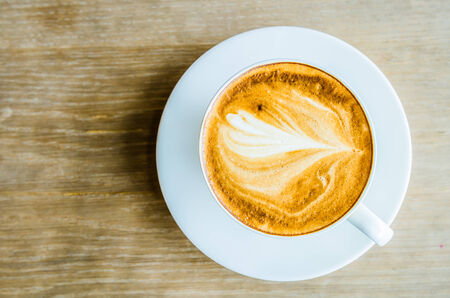1. Understanding Coffee and Caffeine in India
Coffee has woven itself into the rich tapestry of Indian culture, standing alongside tea as a beloved beverage across the nation. While chai remains a daily staple, coffee—especially in South India—enjoys immense popularity for its robust flavour and unique brewing traditions. The ritual of sharing a cup of filter coffee with friends or family is an iconic experience, often associated with warmth, hospitality, and lively conversation.
India’s coffee landscape is wonderfully diverse. You’ll find everything from traditional South Indian filter coffee, prepared using a metal filter and mixed with milk and sugar, to instant coffee brands like Bru and Nescafé that cater to busy urban lifestyles. In cosmopolitan cities, international café chains and local artisanal roasters have also sparked interest in espresso-based drinks such as cappuccinos and lattes.
The caffeine content varies greatly depending on the type of coffee you enjoy. Classic South Indian filter coffee typically contains less caffeine than a standard espresso shot but more than most cups of chai. A typical serving of filter coffee (about 100 ml) offers roughly 60–80 mg of caffeine, while instant coffee provides around 50–70 mg per cup. For comparison, a single shot of espresso can contain upwards of 90 mg of caffeine.
Understanding these differences is especially important for Indians managing diabetes, as both the preparation method and caffeine content may influence blood sugar control. Whether you’re sipping on your morning tumbler at a darshini or grabbing a quick cup at work, knowing what goes into your brew is the first step towards making healthier choices.
2. Diabetes and Its Prevalence Among Indians
Diabetes, particularly type 2 diabetes, is fast becoming one of the biggest health challenges in India. According to recent studies, India is home to over 77 million people living with diabetes, earning the country the title “Diabetes Capital of the World.” This number is projected to rise even further in coming years, making it crucial for Indians—especially those who love their chai and coffee—to understand how daily habits affect blood sugar levels.
Common Risk Factors for Diabetes Among Indians
| Risk Factor | Description |
|---|---|
| Genetic Predisposition | Family history increases susceptibility, especially among South Asians. |
| Urban Lifestyle | Sedentary habits and less physical activity are common in cities like Mumbai, Delhi, and Bengaluru. |
| Diets High in Carbs & Sugar | Traditional meals such as rice, roti, and sweets contribute to high glycaemic loads. |
| Obesity & Abdominal Fat | Increased waist circumference is a significant risk factor for insulin resistance. |
| Stress Levels | Work pressure and modern life stress can impact hormone balance and blood sugar control. |
Why Indian Dietary Patterns Matter for Blood Sugar Control
The Indian diet is unique—rich in grains (like rice and wheat), pulses, potatoes, sweets (mithai), fried snacks (samosa, pakora), and sweetened beverages such as chai and lassi. While these foods are culturally significant and delicious, they can cause rapid spikes in blood glucose if not balanced properly. Traditional eating patterns often include multiple cups of tea or coffee per day, usually with added milk and sugar. For Indians with diabetes, understanding how these choices interact with caffeine intake and overall dietary habits becomes essential in managing blood sugar effectively.

3. How Coffee and Caffeine Affect Blood Sugar Levels
Coffee is a staple in many Indian households, from a strong South Indian filter coffee to a quick cup of instant brew. But for Indians living with diabetes, it’s crucial to understand how coffee and its primary stimulant, caffeine, interact with blood sugar control. Let’s break down the scientific evidence relevant to our unique metabolic profiles.
Caffeine’s Role in Insulin Sensitivity
Research shows that caffeine can temporarily reduce insulin sensitivity—that is, your body’s ability to use insulin efficiently to lower blood glucose. For people with diabetes, especially type 2 which is common among Indians, this means that after consuming caffeinated drinks like coffee or chai, your post-meal blood sugar may rise higher than expected.
Studies on Blood Glucose Response
Several studies have found that consuming caffeine (around 200 mg or one strong cup) before eating can lead to increased blood sugar levels post-meal. This effect seems more pronounced in people already struggling with insulin resistance—a condition more prevalent among Indians due to genetic factors and typical high-carbohydrate diets. In fact, some research suggests South Asians may experience greater spikes in glucose compared to Western populations after caffeine intake.
Understanding the Indian Metabolic Profile
Indians are genetically predisposed to higher abdominal fat and lower muscle mass, contributing to a higher risk of insulin resistance. Combine this with popular high-carb foods such as rice, roti, and sweets, and you get a metabolic environment where the impact of caffeine on blood sugar regulation is even more significant. Therefore, managing your daily dose of caffeine becomes particularly important for Indians with diabetes.
Does Decaf Make a Difference?
If you love the ritual of coffee but want to minimise caffeine’s effects on your blood sugar, decaffeinated coffee might be an option. Studies indicate that decaf has little to no impact on insulin sensitivity or glucose spikes—so you can still enjoy the flavour without worrying as much about your sugar levels.
Key Takeaway for Indian Coffee Lovers
While moderate coffee consumption is generally safe, those with diabetes should monitor their blood glucose response after caffeinated drinks and consider switching to decaf or limiting intake if they notice significant spikes. Everyone’s metabolism is different—especially given our Indian genetic background—so personal monitoring is key. Always discuss any major dietary changes with your diabetologist or nutritionist for advice tailored to your health profile.
4. Is Coffee Safe for Indians with Diabetes?
When it comes to coffee, every Indian household has its own unique way of brewing and enjoying the beverage—be it a strong black filter coffee, a creamy cup with milk, or adding a dash of sweetness with sugar or jaggery. But if you are living with diabetes, it is crucial to understand how these common choices impact your health.
Black Coffee: The Simple Choice
For those looking for the healthiest option, black coffee stands out. With zero sugar and no added calories, black coffee does not directly spike your blood sugar levels. However, Indians often like their coffee strong, so be mindful of caffeine intake, as excessive caffeine may temporarily increase blood glucose levels in some individuals.
Milk Coffee: A Double-Edged Sword
Most Indians prefer their coffee with milk—whether it’s classic South Indian filter kaapi or a frothy cappuccino. While milk adds protein and calcium, it also contains natural sugars (lactose). For diabetics, consuming too much milk in coffee can contribute to higher carbohydrate intake. Choosing toned or skimmed milk can help reduce fat and calorie content.
Sweeteners: Sugar, Jaggery & Artificial Options
The biggest risk for Indians with diabetes comes from sweetening agents. Traditional sugar and jaggery (gur) are commonly used but can cause rapid spikes in blood glucose levels. Artificial sweeteners like sucralose or stevia are popular alternatives and considered safer when consumed in moderation. Here’s a quick comparison:
| Coffee Type/Additive | Traditional Usage in India | Risks | Benefits |
|---|---|---|---|
| Black Coffee | Popular in urban areas and among youth | Caffeine sensitivity | No sugar/calories; antioxidant-rich |
| Milk Coffee | Mainstay in most households | Lactose raises carbs; possible weight gain | Protein & calcium boost; smoother taste |
| Sugar/Jaggery | Widely used for taste enhancement | High glycemic index; spikes blood sugar | N/A for diabetes control |
| Artificial Sweeteners (Stevia/Sucralose) | Increasingly adopted by diabetics | Poor tolerance in high doses for some people | No direct impact on blood sugar; safe in moderation |
Key Takeaway for Indians: If you have diabetes, black coffee without added sugar is the safest choice. If you prefer milk, opt for low-fat options and keep portions moderate. Always be cautious about sweeteners—choose diabetic-friendly alternatives and avoid overconsumption of traditional sugars or jaggery.
5. Healthier Coffee Practices for Indians with Diabetes
For Indians living with diabetes, making a cup of coffee can be both a cultural pleasure and a health consideration. To enjoy your daily dose of caffeine without spiking blood sugar levels, it’s essential to adopt mindful habits that fit Indian lifestyles.
Choose Low-Fat or Skimmed Milk
Traditional Indian coffee often uses full-cream milk. However, switching to low-fat or skimmed milk can significantly reduce calorie and fat intake, helping manage diabetes better. These alternatives are easily available at local kirana stores and supermarkets across India.
Use Natural Sweeteners Wisely
Instead of refined sugar, consider natural sweeteners like jaggery (gur) or stevia. Jaggery adds a rich flavor rooted in Indian tradition, but remember to use it sparingly as it still contains carbohydrates. Stevia is another popular option among health-conscious Indians since it does not raise blood sugar levels.
Go Easy on Sugar Substitutes
While artificial sweeteners are common in the Indian market, always consult your doctor before regular consumption, as some substitutes may not suit everyone.
Mind Your Portion Sizes
Coffee servings in India vary from small steel tumblers in South India to larger mugs in cafes. Stick to moderate serving sizes—around 120–150 ml per cup—to avoid excessive caffeine and calorie intake. Remember, moderation is key for good glycemic control.
Additional Tips for Everyday Coffee
- Avoid adding cream or condensed milk (malai or mithai dhoodh) to keep fat and sugar levels lower.
- If you enjoy filter coffee, limit the addition of chicory as some blends may increase bitterness and lead to more sweetener usage.
- Pair your coffee with healthy snacks like roasted chana or unsalted nuts rather than sugary biscuits or namkeen.
By making these simple yet effective changes, Indians with diabetes can relish their beloved coffee while keeping health risks at bay. Balancing tradition and wellness is possible—one cup at a time!
6. Alternative Indian Beverages for Diabetics
While coffee and caffeine are popular in India, people with diabetes often seek healthier, traditional alternatives that blend taste and wellness. Fortunately, Indian culture offers a rich variety of naturally low-sugar drinks that align with diabetes management. Here are some culturally relevant options that can be enjoyed daily:
Spiced Herbal Teas (Chai without Sugar)
Nothing says “India” like a good cup of chai. For diabetics, you can prepare chai with spices such as ginger, cinnamon, cardamom, and tulsi (holy basil) but skip the sugar or use a safe artificial sweetener. These spices not only enhance flavor but may also help support blood sugar control.
How to Prepare:
Brew black tea with water, add your favorite spices, and finish with a splash of milk if desired. Avoid condensed milk or sugary premixes.
Buttermilk (Chaas)
Buttermilk is a classic cooling beverage made from yogurt, water, and digestive spices like cumin and coriander. It’s low in carbohydrates and high in probiotics, making it an excellent option for those managing diabetes.
How to Prepare:
Whisk together plain curd (dahi) with cold water, add roasted cumin powder, salt, chopped coriander leaves, and a pinch of asafoetida (hing) for extra flavor.
Coconut Water
Coconut water is naturally low in calories and sugars compared to many packaged juices. It provides hydration and essential electrolytes without causing sharp spikes in blood glucose levels when consumed in moderation.
Tips for Consumption:
Select fresh coconut water over packaged versions with added sugar. Limit intake to one small glass per day to avoid excess natural sugars.
Other Local Options
Lemon water (nimbu pani) without sugar or sweet lassi made from unsweetened yogurt are also refreshing alternatives. Add herbs like mint or tulsi for extra health benefits and authentic Indian flavor.
By exploring these alternative beverages rooted in Indian tradition, people with diabetes can enjoy flavorful drinks while supporting their health goals. Remember to always consult your healthcare provider before making significant dietary changes.


